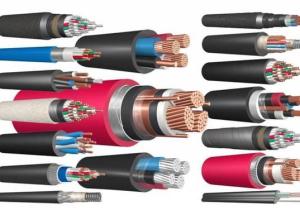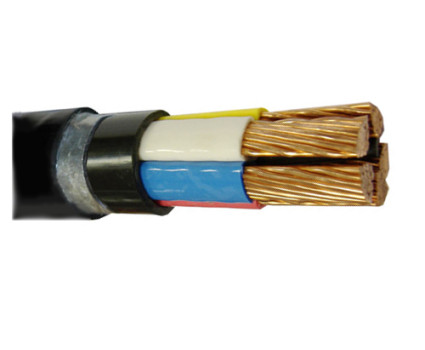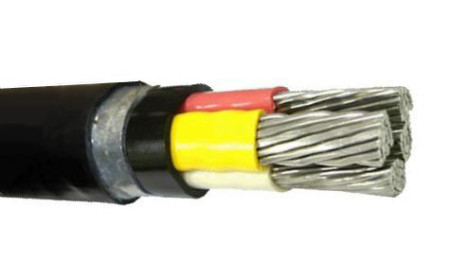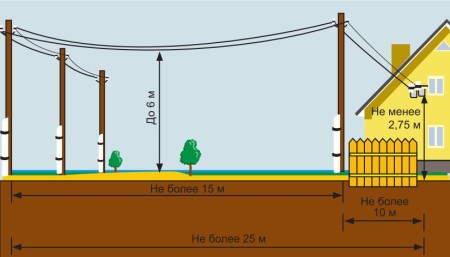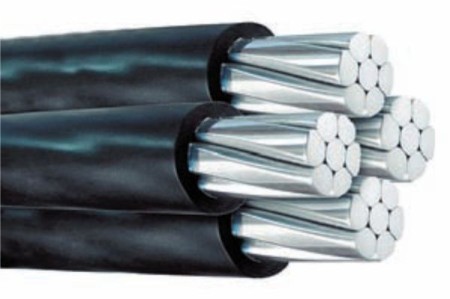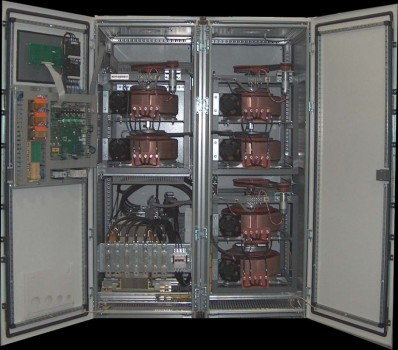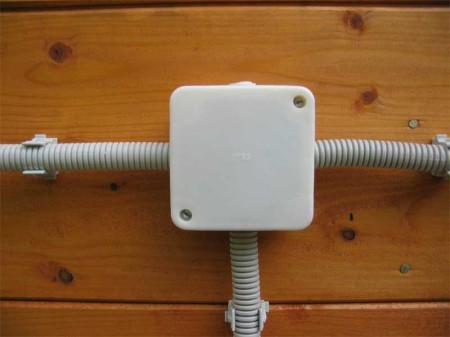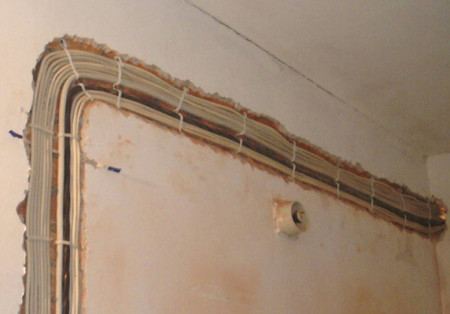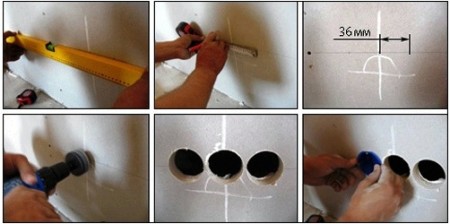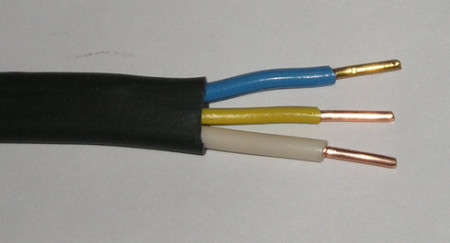Regardless of how close a modern person is to the topic of electricity, he always perceives his presence in his home as a matter of course. But not always everything is so simple, especially for the owner of a newly built country house or cottage. Of course, there is an option to buy a house "turnkey" with all the necessary communications, including electricity, but the fact is that most of the developers do not take into account the individual needs of the buyer, and mount the wiring according to the standard scheme. Naturally, this does not suit everyone.
Especially those who independently build a new one and whether the old house is being reconstructed.
Improper calculation and installation of wiring will cause permanent activation of protection devices, increases the likelihood of electric shock, and even fire - and such prospects are unlikely to anyone like. How to avoid these errors, connect the house to the electricity grid, calculate and mount the wiring in the house and will be discussed in our publication.
Content
The first stage of electrification of a private house is electricity supply. Power cable, types, cross-section, which one to choose
So, the first thing to do is bring the electricity directly to the house. Immediately make a reservation that here we will not say and numerous permissions, going through the instances and documentation, which must be obtained and agreed upon, since this is a full-fledged topic for a separate article, but we will dwell only on the technical side of the issue. Also, we will not talk about how to connect to an air or underground electric line - this is the work of professional electricians. Directly the builder first of all should worry with a question - what cable is better for using for a supply of electricity to the house http://www.bezpeka-shop.com/catalog/silovoy_kabel/.
For these purposes, power cables are used. Power cable is a conductor designed to transfer alternating current from the place of production or conversion (in our case of a transformer) to the place of consumption (home).
What kind of power cable to choose - depends to a large extent on the type of its laying - under the ground or by air. Since in different cases the envelope of the power cable and the degree of its protection will be different.
Both methods have their own advantages and disadvantages, we will consider them briefly with recommendations for choosing a cable for each method.
laying of the power cable under the ground
To begin with, on a suburban or suburban site, you need to choose the easiest and best way to lay the cable. The cable should lie at least a meter away from trees and places where excavations are planned in the future. The cable should not lie in places that are subjected to high loads, under the road, under parking lots, etc. Cable should not interfere with further construction. Almost ideal option - to lay the cable under the tracks or next to them.
Cable laying begins with marking and digging trenches. The minimum depth of the trench should be 70 cm. If you take into account the sand cushion that you need to pour under the cable, it is better to dig a trench 80 cm deep immediately after the trench is ready. It is cleaned of debris - stones, pieces of iron, glass, etc. e. At the bottom pour sand layer of 10 cm, lay the cable.
Now about the choice of cable.
Since the cable will be constantly under certain pressure and exposed to atmospheric water, it is necessary to buy products designed for these loads. Power cables with polyvinylchloride insulation and additional protection are often used.
For laying underground, the copper-copper power cable of the brand VBbShV is excellent.
Of course, it can be argued that most air, and underground power lines - aluminum, and connect them with copper is highly undesirable. This is so, but only with direct contact of metals. Today, there are a sufficient number of ways to reliably connect wires and cables from different metals - for example, a threaded connection or a connection using a terminal box. However, if you want or budget deficit, you can buy a cheaper aluminum power cable AVBbShV.
The jacket of the power cable of both brands is made of polyvinylchloride and is reliably protected from rodents by steel tape.
air cable laying
This connection system is also called "air". Compared with the previous method, this is faster and cheaper. The drawbacks of laying by air include the risk of cable breakage, some inconveniences associated with the "lace" sagging along the territory of the site, and a slightly spoiled aesthetic appearance of the site as a whole. However, most builders choose an air connection.
To minimize all the troubles that are threatened by sagging and cable breakage, it is necessary to observe several simple conditions:
- If the cable is not self-supporting (SIP), a special cable is used that will support the cable.
- To the cable, the cable is fixed with special ties (not with an insulating tape and not with an aluminum wire!) With a distance of about 70 cm between the screeds.
- The cable does not stretch together with the cable, it should slack slightly.
- If the distance from the power line to the connection point is more than 25 meters, an additional support will be required.
In the case of air connection, the use of a CIP cable, which is a 2-wire or 4-core (220 and 380 volt, respectively) aluminum alloy structure that is insulated from a UV-resistant thermoplastic polyethylene is considered optimal.
The SIP is designed only for electrical power supply to the facility, its use inside the building is prohibited.
how to choose the cross section of power cables
The section of the power cable must be selected, being guided by the future load. Correctly conducted calculations will make you feel confident in reliable and safe operation of the entire electrical network in the house.
The main indicator that helps to calculate the cross section and, accordingly, determine the brand of the cable, is the amount of current that the cable is able to pass for a long time without heating up at the same time. Calculate the current is quite simple - you need to summarize the power of all electrical appliances in the house, which will be included in the electrical network.
Below, we give a list of some of the most common devices.
Electrical power, W
- LCD TV 140-300
- Refrigerator 300-800
- Boiler 1500-2500
- Vacuum cleaner 500-2000
- Iron 1000-2000
- Electric kettle 1000-2500
- Microwave 700-1500
- Washing machine 2500
- Computer 300-600
- Lighting 300-1500
- Hairdryer 1000-2500
- Total (approximately) 10000-20000
The next step is to calculate the cross-section of the cable by load. To do this, we calculate the current by the formula:
Single-phase network, voltage 220V:
where:
- P is the total power for all electrical appliances, W.
- U is the mains voltage, V.
- Ki = 0.75 is the coefficient of simultaneity.
- for household electrical appliances.
- cos = 1
Three-phase network, voltage 380 V:
After the current was calculated, we turn to the tables, with which you can find the cable of the required material and section.
But it can turn out that the value obtained as a result of calculations does not quite coincide with the tabulated data. In this case, do not save, choose the nearest value from the table, but in the larger side.
As you can see, in order to make the necessary calculations, you do not need to be a professional electrician. And with a strong desire, all necessary calculations can be made independently. Of course, do not interfere with this, consult with electricians to be completely confident in the reliability of their electrical network.
The second stage of electrification of a private house: wiring
To begin with, it is necessary to make a plan-diagram of the installation of electrical wiring in the house. This will make it possible to quickly and accurately choose a list of consumables and also greatly facilitate the location of the meter, switches, sockets, switchboard, stabilizers, uninterruptible power supplies, etc.
wiring in a private house
In accordance with the requirements for the installation of wiring, room wiring is strongly recommended by wiring with the separation of circuits, which allows additional protection of the circuit from overloads. Separate the chain by the power consumption of electricity. This separation is necessary for the optimum selection of the cable cross-section and the circuit breaker according to the expected loads.

As far as sockets are concerned, they usually use a wire having a diameter of 2.5 mm, for lighting devices, there will be enough wires with a diameter of 1.5 mm. The power consumption of a group of outlets should not exceed 4.6 kW, and the total power consumption of lighting devices - 3.3 kW. On the internal electrical panel, a residual current device is installed separately for each group.
For some powerful electrical appliances: a boiler, a warm floor, an electric furnace in a bath, etc., it is necessary to separate a separate electric circuit. Based on the previously compiled scheme, we calculate the total length of the cable (the cross section for individual groups of electrical appliances), as well as the necessary number of switches, sockets, automatic machines of the necessary parameters. Thus, a conventional single-phase circuit breaker is triggered by a short circuit and an overload in the network, and the differential automaton is designed for short circuits and wandering currents.
In order to lay the hidden electrical wiring in the wall of brick, foam concrete or aerated concrete, stitches are made horizontally and vertically. The electrical system in a private house consists of:
• Automatic machines.
• Counter.
• Intermediate machines.
• Postings.
• Switches.
• Sockets.
• Consumers.
However, if there are frequent voltage surges in the network, then it's worthwhile to think about buying a voltage regulator for the house.
After all, if the voltage significantly exceeds the normal values, then the device may fail, and at low voltage it will work intermittently or completely shut off.
The voltage stabilizer is a cumbersome and rather expensive thing, and if the budget does not allow you to buy a stabilizer for the whole house, you should choose the device only for expensive equipment - TV, refrigerator, etc. In general, for a private house, a three-phase power supply system is more practical and convenient, since it enables the connection of three-phase consumers. For example, a three-phase boiler will operate three times more efficient than a single-phase boiler. In addition, the load can be distributed proportionally in phases.
which wiring is preferable - closed or open
The type of wiring is chosen based on the material from which the house is built. For example, in a house made of wood, the wiring is made only of an open type. In this case, the wires can be laid in a special metal hose, which will provide additional fire safety.
In a brick house, the wiring can be either open or closed.
The concealed wiring may be replaceable (laid in plastic pipes), or non-replaceable, laid in the strobes made in the walls.
The cable for the wiring must exactly match the expected load. Regardless of the type of wiring, all cable and wire connections are made in special junction boxes, which are accessible for monitoring and troubleshooting.
list of tools for wiring
For installation work the following tools will be needed:
• Screwdriver indicator.
• Tester.
• Rotary hammer.
• Pliers.
• A hammer.
• Insulating tape.
• Shtruborez.
The installation of electrical wiring in a private house must be carried out with mandatory consideration of the requirements for the location of outlets and switches. So, the placement of plug sockets and switches is strictly prohibited in rooms with high humidity, for example, in bathrooms and saunas.
wiring marking
Wiring marking begins with the main wire bundle, while marking off the branches, passing through walls, turns, etc. The wire is laid on the wall at a distance of 20 centimeters from the ceiling. Depending on the method chosen, the wiring is routed from the switchboard to the consumers according to the scheme.
recommendations for the selection of consumables
In a private house, energy consumption is an order of magnitude higher than in an apartment, so a cable for wiring in an apartment can be used and a smaller section than in a private house. The vast majority of outlets in the house are designed for portable devices. Single-phase sockets for wiring are often grouped together. A group of sockets is supplied with a copper cable VVGng 3x25.
This group is equipped with a protective switch for 25 amperes. If the house has a three-phase household electricity network, the wiring must be made taking into account the correct load between the phases.
A circuit-breaker for a group of lighting devices is usually used for no more than 10 amperes, which is quite enough. If the total power consumption of all lighting devices exceeds this figure, it is recommended to create another lighting group, with a separate automatic device. For the lighting group, the most commonly used cable is VVGng 3x1.5.
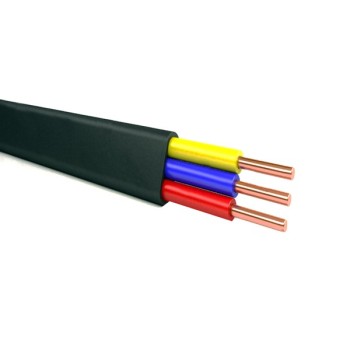
For stationary devices, the sockets of the desired current rating for a single phase, or a three-phase socket, are installed. For electric plates, the socket is supplied with a VVGGG cable, four-wire for three phases or three-core for one phase.
To power the washing machine is recommended to use a separate line with an automatic machine of the required value.
Today, copper wires and cables are used for electrical wiring. Aluminum, of course, is much lighter and cheaper than copper, but it has a number of significant drawbacks. If possible, do not allow the open connection of aluminum and copper wires, as this causes a galvanic reaction, the connection is gradually destroyed, begins to spark, which can lead to a fire. To connect wiring from different metals, there are quite a few adapters, boxes, etc.
And finally. It goes without saying that the person who first encountered the problem of electrifying his own home from scratch can not cope with this task clearly. But the basic principles and rules of installation and selection of materials will be useful to any owner of their own home.


